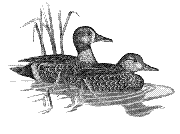US Fish & Wildlife Service
Date of this Version
January 1991
Abstract
Water level manipulations are one of the most effective tools in wetland management, provided fluctuations are well-timed and controlled. Manipulations are most effective on sites with (1) a dependable water supply, (2) an elevation gradient that permits complete water coverage at desired depths over a majority of the site, and (3) the proper type of water control structures that enable water to be supplied, distributed, and discharged effectively at desired rates. The size and location of structures are important, but timing, speed, and duration of drawdowns and flooding also have important effects on plant composition, plant production, and avian use. When optimum conditions are not present, effective moist-soil management is still possible, but limitations must be recognized. Such situations present special problems and require particularly astute and timely water level manipulations. For example, sometimes complete drainage is not possible, yet water is usually available for fall flooding. In such situations, management can capitalize on evapo-transpiration during most growing seasons to promote the germination of valuable moist-soil plants.



Comments
Published in Diana H. Cross and Paul Vohs (eds.) Waterfowl Management Handbook. Fort Collins, CO: U.S. Fish and Wildlife Service, 1988. Online at http://www.nwrc.usgs.gov/wdb/pub/wmh/contents.html